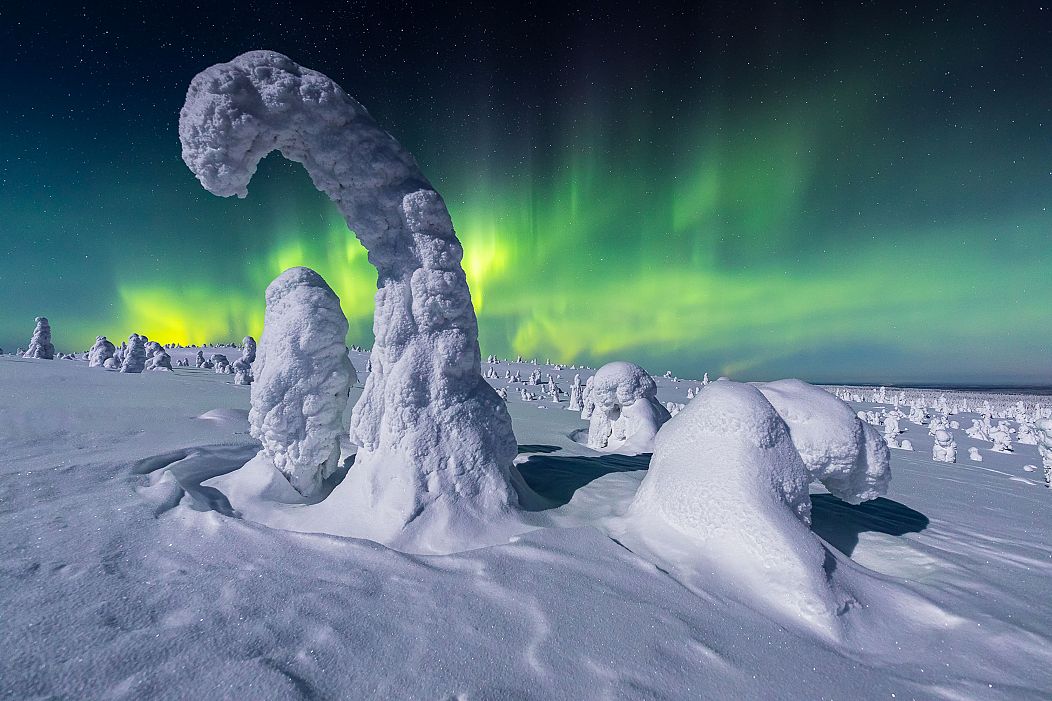“The lights ‘dancing throughout the sky,’ the colours mirrored in your eyes, your coronary heart beating while you see the inexperienced captured at the back of your digicam display screen,” is how the ‘capturetheatlas’ weblog describes the awe-inspiring Northern Lights or Aurora Borealis.
These majestic pure lights are attributable to photo voltaic winds hitting the magnetic subject across the planet.
When the electrons and protons from these photo voltaic winds hit particles within the Earth’s ambiance, they launch vitality. It’s this vitality that causes the dazzling aurora.
Magnificent gentle shows
These fascinating gentle shows can typically be seen in polar areas across the Arctic and Antarctic. One of the best time to see them is in the course of the autumn and spring equinoxes in locations that are free from gentle air pollution.
Journey images weblog, Capture the Atlas has simply revealed its annual assortment of one of the best Northern Lights images. The Northern Lights Photographer of the Yr goals to deliver folks nearer to this beautiful phenomenon in order that they’ll perceive extra about how they occur.
The images have been taken throughout nations such because the US, Russia, Norway, Iceland, and Antarctica by photographers of 18 totally different nationalities.
Seize the Atlas editor, Dan Zafra selected the excellent photographs all year long, searching for new abilities and photos taken in locations that haven’t been photographed earlier than.

“I’ve been searching landscapes and Northern Lights on Russia’s Kola Peninsula for a number of years and I nonetheless discover new spots,” says photographer Sergey Korolev.
The Kola Peninsula is a area of Russia north of the Arctic circle. For greater than two months of the 12 months, it’s blanketed within the polar night time with solely the Northern Lights to brighten the sky.
“I discovered this stone seaside on the coast of the Barents Sea just a few years in the past,” Korolev provides.
“On the time, I used to be mesmerized by the form of the boulders, which moved with the rumble of the ocean waves, in addition to the steep mountains rising from the ocean.”

Photographer Dennis Hellwig took this photograph on the Lofoten Islands in Norway. The area is understood for its dramatic surroundings with mountains, open seas and seashores.
“I used to be capable of stand by means of a gap within the stream and use the tripod to deliver my digicam near the icicles,” says Hellwig.
“It was so tight that it was nearly not possible to work with a tripod. I additionally needed to be sure that my tripod legs didn’t break the ice.”

These ghostly figures captured by Petri Puurunen are literally bushes. The snowy candle spruces will be as much as 10m tall and weigh a number of tonnes when lined in snow.
“The climate forecast promised clear skies and refreshing -24ºC temperatures, so what could possibly be a greater strategy to spend an evening like that than mountaineering as much as the Fells and photographing bushes lined with hard-packed snow?”
“The half-moon was illuminating the surroundings, so the situations have been practically good. Whereas wandering across the space and trying to find compositions, the Auroras have been slowly climbing as much as the sky, fading away simply ten minutes later.”

Benjamin Eberhardt’s picture exhibits an aurora over the IceCube Neutrino Observatory within the South Pole. It’s made up of 1000’s of sensors below the Antarctic ice and which detects particles referred to as neutrinos with the intention to research our cosmos.
“The South Pole might be one of the distant and difficult environments to do images, and it’s strenuous for each people and know-how,” says Eberhardt.
“To realize 24h-long time-lapse pictures, you want some creativity to warmth and insulate your gear with the intention to hold it working, and even rotating, in temperatures ranging right down to -80ºC (-112 ºF).
“In my case, this was a studying curve over a number of months, with a variety of trial and error and frostbite. On the upside, after you have tackled all of the challenges, you’ve loads of causes to be pleased with your pictures.”

Though the Northern Lights, of Aurora Borealis, are likely to get far more publicity, the spectacle will be seen within the southern hemisphere too.
“I’ve had the unimaginable fortune to witness the Southern Lights twice throughout two images journeys to Tasmania,” says photographer Ben Maze.
“Captured on this picture is a trifecta of astronomical phenomena that made for a few of the greatest astrophotography situations one can witness in Australia, particularly, the setting Milky Method galactic core, zodiacal gentle, and naturally, the elusive Aurora Australis.”
“On high of this, a glowing show of oceanic bioluminescence adorned the crashing waves, including the cherry on high to what was already a panoramic expertise.
“I’m eternally grateful for moments in nature like this that present us the true wonders of our planet.”

The sundown was actually disappointing. Actually, the climate situations have been unhealthy, and it rained intermittently, however I saved ready, hoping that at night time, the situations would enhance and the Northern Lights would present themselves in all their magnificence.
“And so it was! After spending a number of hours observing the sky, round 1 am, the clouds moved away, and the sky was already lined by the Northern Lights. Filled with euphoria, I went to the spot I preferred and took a collection of pictures of this distinctive pure present.”
“It was really a beautiful expertise, the place I used to be capable of check all my night time images abilities,” he added.
Visit capturetheatlas.com to enjoy the complete gallery with all 25 images in their full glory.
Supply: www.thesouthafrican.com




